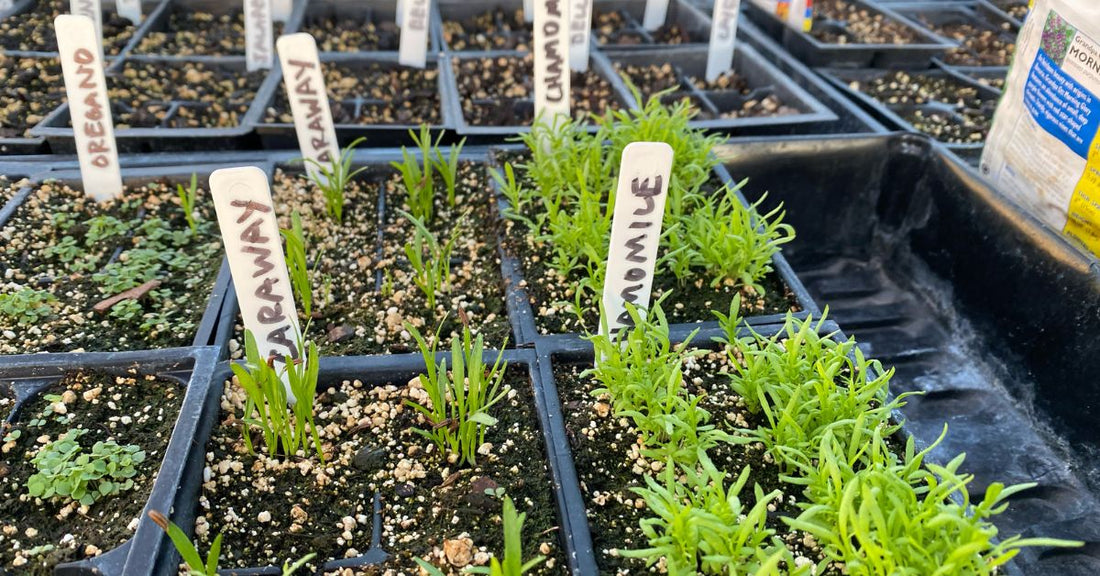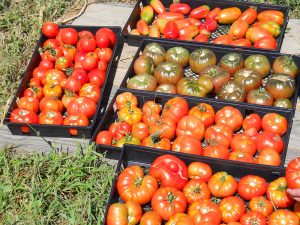
The Ultimate Guide to Choosing Seeds for Your Survival Kit
05:39 AMWhen preparing for unforeseen emergencies, having essential resources available is one of the most important elements. Among these resources, seeds are vital in ensuring long-term food sustainability. Whether faced with a natural disaster, economic disruption, or any other emergency, choosing the right seeds for your survival kit can make the difference between resilience and vulnerability.
Choosing seeds involves more than simply picking random packets from the gardening section. It requires understanding which varieties are best for long-term storage, diverse growing conditions, and nutritional value.
This guide will explain the critical factors to consider while building an effective seed collection, ensuring your survival strategy is reliable and robust. Creating a reliable emergency seed kit can help safeguard your future and maintain self-reliance during challenging times.
Why Seeds are Essential for a Survival Kit
Seeds provide a sustainable and renewable source of food, which is crucial for long-term survival scenarios. Unlike stored food with a finite shelf life, seeds empower you to grow a continuous supply of fresh produce, ensuring access to vital nutrients such as vitamins, minerals, and fiber.
This self-reliance in food production can be lifesaving during prolonged emergencies or when external food supplies are unavailable. Whether you prefer fast-growing vegetables or hardy crops that can withstand challenging climates, including various seeds in your kit offers versatility, reliability, and the promise of sustenance for the future.
Understanding Seed Categories
There are two primary types, each with unique characteristics:
Open-Pollinated (OP) Seeds
- These seeds result from natural pollination by wind, insects, or other natural methods.
- Plants grown from open-pollinated seeds produce offspring with the same traits as the parent plant, provided there is no cross-pollination with other varieties.
- They are ideal for seed-saving, as you can collect the seeds and replant them year after year, ensuring consistency and sustainability.
- Open-pollinated seeds are popular for preserving heirloom varieties, which hold historical and cultural significance.
Hybrid Seeds
- Hybrid seeds are a cross of two different parent plants to achieve a specific combination of desirable traits, such as increased yield, disease resistance, or better adaptability.
- While hybrids perform exceptionally in the first generation, the seeds they produce are often unreliable.
- Hybrids are less suitable for seed-saving and long-term use.

Importance of Heirloom Seeds
Heirloom seeds hold immense value for their ability to produce crops with exceptional flavors and unique characteristics. Passed down through generations, these seeds represent a genetic lineage that has remained stable over time, ensuring reliable growth and consistent quality.
Unlike hybrid varieties, you can save and replant heirloom seeds year after year, making them an indispensable resource for sustainable gardening and food security. Their diverse genetic makeup makes them more adaptable to varying climates and resistant to certain pests, which is critical in changing environmental conditions.
Selecting Non-GMO Seeds
When preparing a survival kit, choosing non-GMO seeds ensures a safer and more sustainable approach to self-reliance. Unlike genetically modified organisms (GMOs), engineered for large-scale agricultural objectives to resist pests or enhance yields, non-GMO seeds remain natural and free from artificial genetic modifications.
Non-GMO seeds are the best option for home gardens and long-term survival kits because they maintain the plants’ natural ability to adapt to local conditions. Always verify the non-GMO status of seeds by checking for third-party certifications or supplier guarantees, which provide a reliable source of healthy crops in times of need.
Considering Climatic Adaptability
When planning for emergency preparedness, consider the variability of climatic conditions and their potential impact on crop growth. Selecting seeds that thrive across various environments ensures greater resilience and adaptability in unpredictable scenarios.
Drought-tolerant varieties can sustain yields during water shortages, while cold-hardy plants endure freezing temperatures. Seeds capable of thriving in diverse soil types and withstanding extreme weather fluctuations, such as heavy rainfall or heat waves, are more likely to produce reliable harvests despite the challenges.
Focusing on High-Nutrition Crops
Nutrient-dense crops ensure access to vital calories, proteins, and vitamins. Calorie-rich options such as corn, potatoes, and sweet potatoes provide sustained energy. Protein is critical for muscle repair and overall health, making legumes such as beans, lentils, and chickpeas an indispensable inclusion.
Vitamin and mineral-packed vegetables, such as spinach, kale, broccoli, and carrots, contribute to a balanced diet and bolster the immune system. Also, consider crops that are rich in healthy fats, such as squash or sunflower seeds.

Buy from Reputable Suppliers
High-quality seeds are essential for achieving healthy and productive plants that can sustain your needs in emergencies. Reputable suppliers guarantee seed viability, accurate labeling, and reliability, which are critical factors in your planning.
Avoid purchasing cheap or poorly reviewed alternatives, as compromised seed quality can jeopardize the effectiveness of your garden. Invest in a quality emergency seed kit from specialized brands focusing on emergency preparedness. These kits include durable, long-term viable seeds suitable for various growing conditions, giving you the confidence and resources to cultivate sustainable crops in times of need.
Storing Seeds for Longevity
Proper seed storage is essential to preserve their viability and ensure successful germination when needed. Follow these detailed steps to maximize the longevity of your seeds:
- Choose the Right Containers: Use airtight containers such as glass jars with seals or vacuum-sealed bags to minimize air exposure. Avoid using plastic bags unless designed for long-term storage.
- Control Moisture Levels: Include desiccants, such as silica gel packets, in the containers to absorb excess moisture. Ensure the seeds are dry before sealing them to prevent mold and rot.
- Maintain a Cool Temperature: Store seeds where the temperature remains consistently low, ideally between 32°F and 41°F. Refrigerators are excellent options for maintaining such conditions. Avoid areas exposed to temperature fluctuations, such as attics or basements.
- Store in a Dark Spot: Light exposure can damage seeds and reduce their viability.
- Label Clearly: Mark each container or packet with the seed type and the collection or expiration date. This helps you track seed age and prioritize older seeds for use.
- Check and Rotate Periodically: Inspect your stored seeds at least once a year to ensure they remain viable and free of pests or mold.
By carefully selecting seeds for your survival kit, you’re investing in the security and independence of your future. Whether you’re an experienced gardener or new to self-reliance practices, planning by assembling a diverse and quality seed collection is one of the smartest moves you can make. With the right approach, you can turn your emergency preparedness into an opportunity for sustainability and growth.










